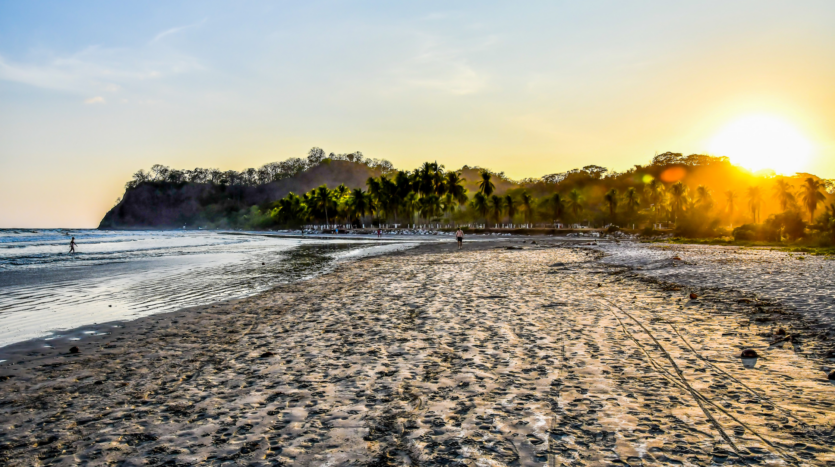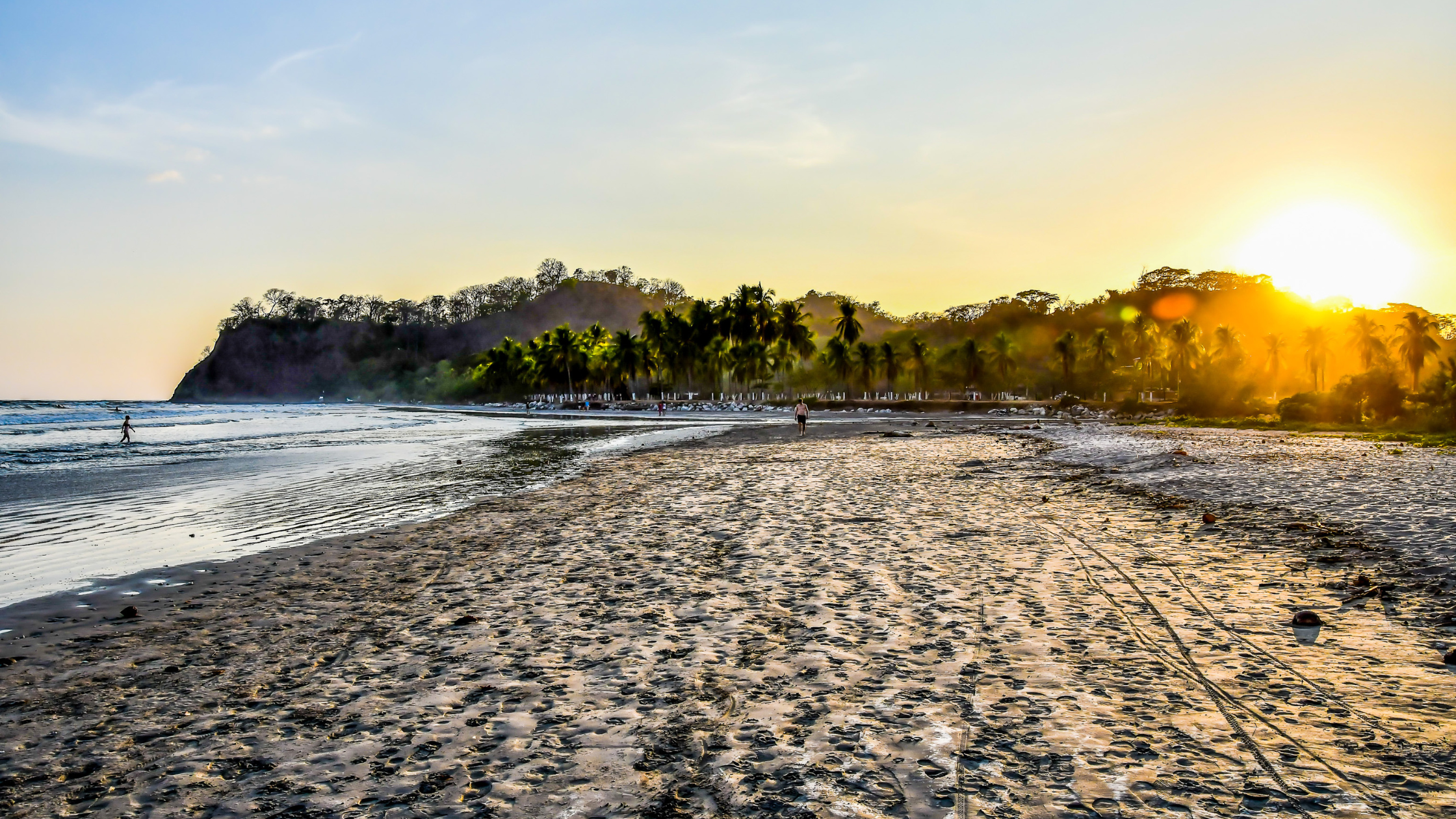Cost of Living in Costa Rica: How does it compare to that of the U.S.?
When deciding whether to reside in Costa Rica or the United States, you need to consider more than just whether you favor rain forests or purple mountain majesties. Costa Rica, a Latin American country with Caribbean and Pacific beaches, is a favorite retirement destination for Americans due to its natural beauty and relatively inexpensive cost of living.
However, don’t pack your bags and get your passport before you’ve determined how much money you’ll need to live in each location. This list includes seven major factors that influence how much you spend when living in Costa Rica or the United States, from least to most significant.
7. Groceries and Dining Out
The average monthly grocery bill in Costa Rica is $400.
The average weekly grocery bill in the US is $1080.
Spending in restaurants in Costa Rica: $9.70 to $25 per person.
Spending in restaurants in the United States: $11 to $40 per person.
Depending on your interests, you may find it simple to save money on meals in Costa Rica. Smaller markets offer an abundance of local products at a lesser cost than large supermarkets. However, supermarket costs for imported items, such as peanut butter, are exceedingly costly in comparison to the United States. The most costly commodities in Costa Rica are usually beef, wine, and cheese, all of which are primarily imported.
Although some of these items are likewise expensive in the United States, they are normally far less expensive in Costa Rica. Having said that, the typical American spends $270 per week on groceries, compared to just $100 in Costa Rica.
If you want to take a break from cooking, you can visit a nearby restaurant. Costa Ricans and Americans both have a diverse range of dining alternatives, including low-cost eateries serving satisfying yet reasonable meals. Restaurant prices in upscale venues in the United States are high, yet an excellent Costa Rican dinner plate can cost $25 or more per person.
6. Entertainment.
The average cost of a movie ticket in Costa Rica is $6.00.
The average cost of a movie ticket in the US is $11.75.
The average cost of a concert ticket in Costa Rica is $40 to $100.
The average cost of a concert ticket in the US is $252.
One of the simplest ways to assess the difference in living costs between America and Costa Rica is to compare the cost of entertainment. A movie ticket, for example, costs almost twice as much in the United States. Similarly, most people pay a high price to attend an American concert, although concerts by big performers in Costa Rica are often less expensive.
If your monthly budget is restricted but you still want to have unforgettable experiences, Guanacaste, Costa Rica, and its neighboring areas provide a multitude of inexpensive attractions and outdoor excursions. Guanacaste’s stunning scenery, which includes lush mountains, intriguing volcanoes, and idyllic beaches on the Pacific coast, guarantees amazing vistas and activities for both visitors and residents. Whether you’re visiting national parks, resting on sun-kissed beaches, or going on hiking excursions, there are lots of affordable ways to immerse yourself in Costa Rica’s natural splendor. Admission costs to the region’s well-known national parks normally run from $7 to $15 per person, enabling easy access to these incredible natural beauties.
Similarly, the United States has several lovely parks around the country, ranging from majestic redwood forests in California to the dazzling waves of the Florida coast. State and national parks often charge minimal entry fees, ranging from $5 per person to $35 per vehicle.
5. Utilities
The average electricity cost in Costa Rica is $30.
The average power bill in the US is $149.
The average water cost in Costa Rica is $10 to $15.
The average water bill in the US is $73.
When it comes to paying for utilities, Costa Rica has a far lower cost of living than the United States. The average American spends more than $200 per month on water and power bills. Costa Ricans, on the other hand, often spend $50 or less for these essential utilities.
The demand for energy in each state influences how much you spend. For example, Michigan people pay a lot for heating in the winter, but Texans pay a lot for air conditioning in the summer.
Costa Rica, like many other Central American countries, has high temperatures throughout the year. As a consequence, you will not have to worry about heating your home. Some residents have air conditioning, but others prefer chilly breezes and open windows. Costa Rica’s rainy season, which lasts from May to November, also makes the weather more pleasant and decreases the need to spend money on cooling your home.
4. Clothing
The average cost of Levi’s jeans in Costa Rica is $73.89.
The average cost of Levi’s jeans in the United States is $50 to $70.
The average cost of Nike sneakers in Costa Rica is $112.94.
The average cost of Nike sneakers in the US is $66.75.
If you want to wear name-brand clothing, remaining well-dressed in Costa Rica will be more expensive than in the United States. Shoes like Nike, Adidas, and Skechers are more expensive for Costa Ricans since they are not created locally. Costa Rican consumers also pay more for other stylish products, such as sunglasses. The difference in the overall cost of these items is due to import tariffs. As a result, many Costa Ricans buy at secondhand stores, where costs are much lower.
Sales tax is another reason you may pay extra for ordinary items while living in Costa Rica. The average rate in the country is 13%, which is much higher than the rate in the United States. Some states charge 5% or more in sales tax, while others charge very little. For example, Delaware, Montana, and Oregon have no sales tax.
Remember that, regardless of whatever country you’re in, prices are nearly always higher in tourist regions. Furthermore, although you will have to spend more money on clothes in Costa Rica, you will not require a seasonal wardrobe. The stuff you select will be equally comfortable in both the rainy and dry seasons, but most Americans must purchase clothing of varying weights to stay comfortable throughout the year.
3. Healthcare
Costa Rica has complete public health coverage for the whole population.
The United States has no public health coverage.
The average cost of private insurance in Costa Rica is $40 to $250 per month.
The average cost of private insurance in the United States is $450 a month
Healthcare bills are a significant financial hardship for many Americans. Because the country lacks a public health insurance alternative, many people must pay for treatments themselves or purchase private insurance coverage. A single person’s monthly insurance premium might range from $400 to $1000, depending on their health, age, gender, and job status. Employers typically pay their employees’ insurance premiums, which helps keep prices down. In addition, certain low-income families and the elderly qualify for Medicaid and Medicare.
Unlike the United States, where healthcare prices vary based on personal characteristics, Costa Rica provides public health services that cover all required medical bills. This medical card covers doctor’s appointments, operations, hospital visits, and prescription medications at a low or free cost. However, these services are only available to citizens and permanent residents. As a result, many expats opt to obtain private healthcare coverage, which often costs no more than $250 per month.
Because of the disparities in healthcare costs between the United States and Latin America, many people go to Costa Rica and neighboring nations for treatment. Even uninsured people pay a fraction of the cost for health-care services of comparable quality to those in the US.
2. Transportation.
Cost of running a family car in Costa Rica: $130 per month.
The monthly cost of running a family car in the United States is $894.
Monthly public transportation in Costa Rica costs $0.35 to $10 per bus ticket.
Monthly bus passes in the US cost $100 or more.
Regardless of where you reside, owning and maintaining a car is expensive, from insurance to upkeep to property taxes. However, expenditures in Costa Rica are often substantially lower. While Americans spend about $11,000 per year to maintain their automobiles, Costa Ricans spend just around $130 each month. This is despite the difference in gasoline costs. A gallon of gasoline in the United States costs nearly $2 cheaper on average than gasoline in Costa Rica.
Despite the lower cost, Costa Ricans have not embraced vehicle ownership in the same way that Americans do. Currently, almost half of all families in the country own at least one vehicle, compared to more than 90% of American households. Some Costa Ricans opt not to own a car because they do not want to be stuck in traffic, while others find public transportation to be more cost-effective and efficient.
Transportation costs in the United States are more complicated. Unless you live in a major city, you may not have access to public transit, as many smaller villages lack buses and subways. When visiting a major city, such as New York City, a 30-day MetroCard costs around $132.
1. Housing.
The average mortgage interest rate in Costa Rica is 9.22%.
The average mortgage interest rate in the US is 6.94%.
The average rent for a two-bedroom apartment in Costa Rica is $800.
The average rent for a two-bedroom apartment in the US is $1,317.
To construct a realistic cost-of-living comparison between the United States and Costa Rica, housing prices must be considered. Prospective Costa Rican home buyers may struggle to find a property within their budget. Real estate and loans are not as widely available as it is in the United States, and local bank mortgage interest rates are significantly higher.
Rent costs, on the other hand, are significantly lower in Costa Rica, particularly when compared to big cities such as Los Angeles. The gap in house costs is one of the reasons why the overall cost of living in Costa Rica is significantly cheaper than in the United States.
When navigating the complexity of Costa Rican real estate, obtaining the help of a local real estate agent is essential. Their understanding of local market trends, legal procedures, and negotiation abilities can lead to a seamless and secure purchase. Whether you want to invest in property for retirement, relocation, or vacation, a real estate agent can help you every step of the way.
For anyone contemplating a relocation to the vibrant region of Samara or Nosara, RE/MAX Blue Ocean is ready to help you locate your ideal home. Contact us today to begin your road to owning a piece of paradise in Costa Rica.


